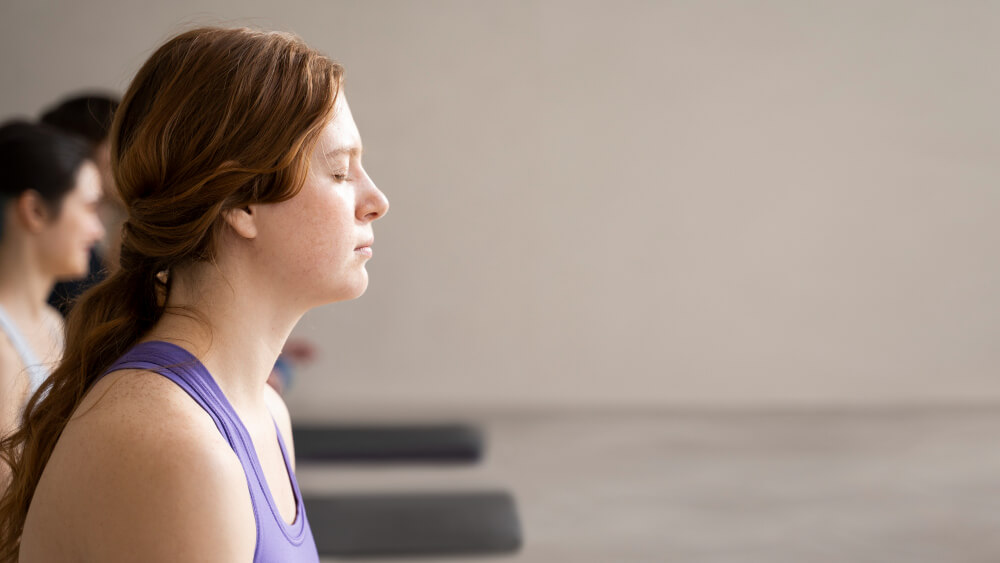
In today’s fast-paced world, stress can easily become overwhelming, cluttering your mind and tensing your body. Imagine if you could regain control in just a few minutes using a simple, natural method. Breathing techniques offer a powerful, science-backed solution that soothes anxiety and enhances mental clarity instantly. This comprehensive guide delves into five essential breathing methods, based on the most recent psychological research (2023), complete with practical, step-by-step instructions. Whether you’re battling work-related stress or simply in need of a peace break during your hectic day, these techniques are your key to improved well-being and resilience.
Understanding the Science Behind Controlled Breathing
Our body is designed to react to stress with a series of automatic physiological responses. However, emerging research from the fields of psychology and neuroscience shows that controlled breathing can override these reactions by engaging the parasympathetic nervous system—the body’s natural relaxation response. Numerous scientific studies confirm that intentional breathing not only soothes the mind but also regulates physiological stress factors.
This section explains how disciplined breathing influences neural pathways, reduces cortisol levels, and interrupts the anxiety cycle, producing a more balanced mental state. Recent insights from 2023 highlight that regular practice can boost emotional regulation and overall mental health.
Grasping the science of controlled breathing empowers you to utilize these techniques with confidence and precision. Adopting these methods provides a natural alternative to managing stress, without the need for medications. For more detailed studies, consider exploring resources available from institutions like the National Institutes of Health.
Diaphragmatic Breathing: The Cornerstone Technique

Diaphragmatic breathing, also known as abdominal or belly breathing, is a fundamental practice in stress management. By employing the full capacity of your lungs, this technique triggers a deep sense of calm and relaxation. When performed properly, it activates the diaphragm to allow increased oxygen flow, effectively reducing tension and invigorating your body.
Begin by sitting comfortably, placing one hand on your chest and the other on your belly. As you slowly inhale through your nose, focus on expanding your belly while keeping your chest steady. This process not only calms your nervous system but also enhances lung capacity over time. Recent psychological studies reveal that regular practice of diaphragmatic breathing can significantly lower anxiety and depressive symptoms.
Whether at the office, before a high-pressure meeting, or at home during stressful moments, this technique offers a quick escape from tension. With just a few minutes of practice each day, diaphragmatic breathing can build mindfulness and promote a lasting inner peace.
Box Breathing: A Method to Regain Mental Clarity

Box breathing, named for its four-step process, divides your respiratory cycle into equally counted segments—inhalation, holding the breath, exhalation, and holding again. This rhythmic practice is designed to promote mental clarity and reduce stress. Athletes, professionals, and high-performers worldwide rely on it to maintain focus and manage pressure effectively.
To master box breathing, find a quiet space and breathe in for a count of four, hold for four counts, exhale for four counts, and finally pause for an additional four counts before beginning again. The structured repetition of this method calms the mind and helps eliminate distractions.
Robust for both relaxation and performance enhancement, box breathing is a favored technique among military personnel and corporate leaders. Its ability to sharpen concentration and reduce stress makes it an essential practice for anyone looking for quick, efficient stress relief. For more on this technique, visit trusted sources like PubMed for detailed research findings.
Alternate Nostril Breathing: Harmonizing Your Energies
Alternate nostril breathing, or Nadi Shodhana in Sanskrit, is an ancient practice that has been revitalized by modern psychology. It helps balance cognitive and emotional states by harmonizing brain activity. This technique is celebrated for its ability to synchronize both hemispheres of the brain, fostering mental equilibrium and reducing anxiety.
To perform alternate nostril breathing, sit comfortably with an upright posture. Close your right nostril using your thumb, inhale slowly through the left, then switch by closing the left nostril with your ring finger while exhaling through the right. Continue by inhaling through the right and exhaling through the left. This deliberate alternation balances your breathing and induces a calming effect.

Many modern practitioners report enhanced emotional stability, reduced stress, and improved cognitive function with regular practice. Its simplicity and noticeable benefits have made it a favorite in meditation and mindfulness workshops. Educational centers and wellness retreats now frequently include alternate nostril breathing in their stress management curriculums.
4-7-8 Breathing: Quick Stress Relief in Minutes
The 4-7-8 breathing technique is renowned as one of the fastest ways to achieve a state of calm. Using a simple yet effective ratio, this method encourages deep and rhythmic breathing, making it an ideal tool even for beginners. Its immediate effect on reducing heart rate and promoting relaxation is well-documented.
Begin by quietly inhaling through your nose for a count of four, hold your breath for seven counts, and exhale completely through your mouth for eight counts. This structured breathing cycle helps ease anxiety, combat insomnia, lower blood pressure, and facilitate a peaceful state, as supported by recent research.
Though rooted in ancient yogic traditions, the 4-7-8 technique has been embraced by modern therapeutic practices. Mental health professionals frequently recommend it as a complement to therapy sessions for stress relief and improved sleep quality. To delve deeper into its benefits, reputable sites like the Mayo Clinic offer informative resources.

Integrating Breathing Techniques into Daily Life
Incorporating breathing techniques into your daily routine can significantly improve how you manage stress. Once you understand the transformative benefits of controlled breathing, seamlessly integrating these practices into your lifestyle becomes natural. Whether you start your day with a brief session or use them as quick reprieves during work, these methods combine flexibility with efficiency.
Dedicate specific moments during your day for breathing exercises. For example, begin your morning with diaphragmatic breathing to set a calm tone, engage in box breathing before demanding meetings, or apply the 4-7-8 technique at bedtime to encourage restful sleep. Numerous apps and online platforms now provide guided sessions to help you build and maintain these healthy habits.
For a truly holistic approach, combine your breathing regimen with practices like yoga or meditation. The synergy between movement and mindful breathing nurtures overall well-being and reinforces mental clarity. As you become more attuned to your breath, moments of tranquility will emerge naturally—even during your busiest days. For further insights on creating a mindful routine, resources like Psychology Today and the American Psychological Association offer valuable guidance.
Breathing techniques are far more than quick fixes—they are gateways to sustained mental and physical health. By learning the science behind these methods and practicing techniques such as diaphragmatic, box, alternate nostril, and 4-7-8 breathing, you can transform your stress response and lead a calmer, more centered life. Incorporate these exercises into your daily routine, and experience how each mindful breath contributes to reshaping your outlook on life. Remember: every deep, intentional exhale is a step toward a healthier, more balanced future.



